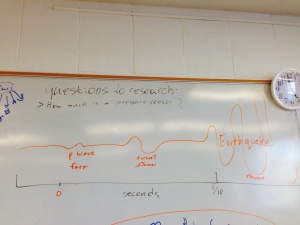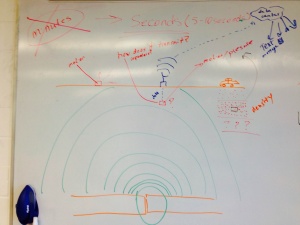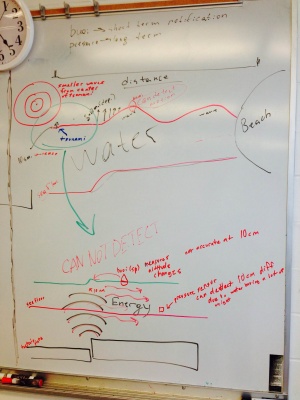Difference between revisions of "Disaster-Preparedness"
Jump to navigation
Jump to search
| Line 1: | Line 1: | ||
| − | |||
=Platforms= | =Platforms= | ||
| + | ==Motion Sensor== | ||
| + | ===Purpose=== | ||
| + | ===Sensors=== | ||
| + | ====Use==== | ||
| + | ====Wiring==== | ||
| + | ====Code Samples==== | ||
| + | ===Housing=== | ||
| + | ====Case==== | ||
| + | ====Resonate Frequency==== | ||
| + | ====Power==== | ||
| + | ===Code=== | ||
=Research= | =Research= | ||
Revision as of 14:29, 6 June 2014
Contents
Platforms
Motion Sensor
Purpose
Sensors
Use
Wiring
Code Samples
Housing
Case
Resonate Frequency
Power
Code
Research
These are notes and observations from research.
Earthquake
- occur due to movement in tectonic plates
- only seconds of notice, 5-10 seconds
- [p waves] are much faster than [s waves] and the actual waves that cause the earthquake.
- earthquakes travel at about the same speed as data networks
- can be measured by motion (on surface or underground) and pressure (underground)
- downside of underground monitoring is 1) power and 2) transmission
- can use repeaters or solar power to solve these issues
- advantage of being underground is distance from noise (such as animals and humans) and being closer to the source of the earthquake
- being attached to rock is good
- downside of underground monitoring is 1) power and 2) transmission
Resources
Tsunami
- in the deep sea pressure sensors are used to measure the relatively small sea-level change (in centimeters)
- nearer to shore, where waves start to form, altitude could be measured by buoy
- travel at hundreds of miles per hour
- tsunami headquarters in Hawaii
- notification could be minutes to hours in advance depending on distance from source of tsunami
- height/speed of wave reduces with distance


